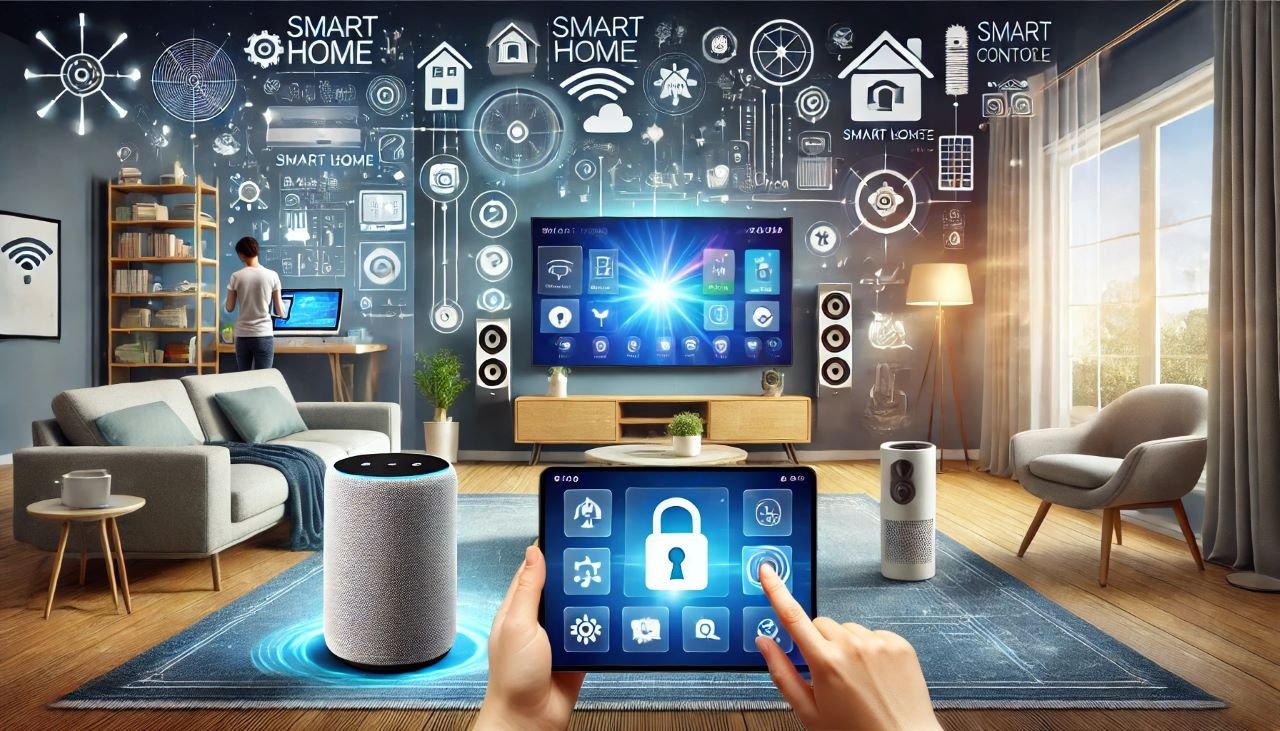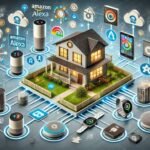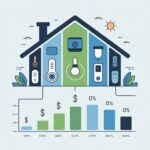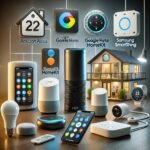Integration of Smart Home and Entertainment Systems: Enhancing Convenience for Users
The convergence of smart home and entertainment technologies is revolutionizing the way we interact with our living spaces.
This integration offers unprecedented convenience, efficiency, and an enhanced quality of life for users.
By combining smart speakers, home theater systems, and other entertainment devices with smart home functions, users can seamlessly control various aspects of their home environment through a single interface.
This comprehensive report explores the integration of smart home and entertainment systems, detailing the benefits, key technologies, and future trends in this evolving landscape.
Benefits of Integration
-
Enhanced Convenience:
- Unified Control: Users can control multiple home functions such as lighting, temperature, and security through a single entertainment device interface, simplifying the user experience.
- Voice Commands: Integration with voice assistants like Alexa, Google Assistant, and Siri allows users to manage their home environment hands-free.
-
Improved Efficiency:
- Automated Routines: Smart systems can create automated routines that adjust lighting, temperature, and security settings based on user preferences and schedules.
- Energy Savings: Smart home integration helps optimize energy use by controlling lights, thermostats, and appliances more efficiently.
-
Enhanced Entertainment Experience:
- Seamless Integration: Home theater systems and smart speakers can be integrated with streaming services and other entertainment sources, providing a seamless entertainment experience.
- Immersive Environment: Synchronizing lighting and sound with entertainment content creates an immersive environment, enhancing the overall experience.
-
Increased Security and Safety:
- Integrated Security Systems: Users can monitor and control security systems, including cameras, locks, and alarms, through their entertainment devices.
- Remote Monitoring: Smart home systems allow for remote monitoring and control, giving users peace of mind when they are away from home.
Key Technologies in Smart Home and Entertainment Integration
-
Smart Speakers and Voice Assistants:
- Central Control Hubs: Devices like Amazon Echo, Google Nest, and Apple HomePod serve as central control hubs for smart home systems.
- Voice Commands: Voice assistants enable users to control various smart home functions using simple voice commands.
-
Home Theater Systems:
- Integrated Controls: Modern home theater systems can control smart home functions, creating a unified entertainment and home management system.
- High-Quality Audio and Video: Advanced audio and video capabilities enhance the entertainment experience.
-
Smart Displays:
- Visual Interfaces: Smart displays, such as the Google Nest Hub and Amazon Echo Show, provide visual interfaces for controlling smart home devices and accessing information.
- Interactive Experiences: These devices offer interactive experiences, including video calls, streaming, and home monitoring.
-
Smart Lighting Systems:
- Adaptive Lighting: Smart lighting systems like Philips Hue and LIFX can adjust lighting based on user preferences, schedules, and entertainment content.
- Mood Setting: Lighting can be synchronized with music, movies, and games to create specific moods and atmospheres.
-
Smart Thermostats:
- Climate Control: Devices like the Nest Thermostat and Ecobee allow users to control home temperature settings through integrated systems.
- Energy Efficiency: Smart thermostats learn user preferences and adjust settings to optimize energy use.
-
Smart Security Systems:
- Integrated Monitoring: Systems like Ring, Arlo, and ADT integrate with smart home hubs, allowing users to monitor and control security features.
- Remote Access: Users can access security feeds and control locks and alarms remotely via their smart home systems.
Examples of Smart Home and Entertainment Integration
-
Amazon Echo and Alexa:
- Voice-Controlled Home Management: Users can control lights, thermostats, locks, and more through voice commands.
- Entertainment Integration: Alexa can play music, control TV settings, and stream content, while also managing other smart home devices.
-
Google Nest Ecosystem:
- Unified Control: Google Nest devices, including speakers, displays, and thermostats, work together to provide a unified control system.
- Routine Automation: Users can set up routines that adjust multiple devices simultaneously, such as turning off lights and lowering the thermostat when a movie starts.
-
Apple HomeKit and HomePod:
- Centralized Control: Apple HomeKit integrates various smart home devices, which can be controlled through the Home app or Siri voice commands.
- Seamless Ecosystem: HomePod serves as a central hub, offering high-quality audio while controlling HomeKit-enabled devices.
-
Samsung SmartThings:
- Comprehensive Integration: Samsung SmartThings supports a wide range of smart home devices, providing comprehensive control through a single app.
- Entertainment Synergy: SmartThings integrates with Samsung TVs and other entertainment devices, allowing users to create immersive entertainment setups.
Future Trends in Smart Home and Entertainment Integration
-
Advanced AI and Machine Learning:
- Predictive Analytics: Future smart home systems will use AI to predict user behavior and preferences, creating even more personalized and efficient home environments.
- Contextual Awareness: Devices will become more contextually aware, adjusting settings based on real-time data and user habits.
-
Enhanced Interoperability:
- Standardization: Increased standardization across devices and platforms will improve interoperability, making it easier for users to integrate and control various smart home and entertainment devices.
- Cross-Platform Integration: Seamless integration across different brands and ecosystems will become more common, enhancing user convenience.
-
5G Connectivity:
- Faster and More Reliable Connections: The rollout of 5G networks will provide faster and more reliable connections, supporting more complex and responsive smart home systems.
- Expanded Capabilities: Enhanced connectivity will enable new capabilities, such as real-time video streaming and advanced remote control features.
-
Sustainability and Energy Management:
- Green Technologies: Smart home systems will increasingly incorporate sustainable technologies, such as solar power integration and advanced energy management tools.
- Energy Efficiency: Continued focus on energy efficiency will drive the development of smarter, more efficient home systems.
Challenges and Considerations
-
Privacy and Security:
- Data Protection: Ensuring the privacy and security of user data is paramount, particularly as more personal information is collected and processed by smart home systems.
- Cybersecurity Threats: Protecting smart home systems from cybersecurity threats requires robust security measures and regular updates.
-
User Adoption and Education:
- Complexity: The complexity of integrating and managing multiple smart home devices can be a barrier to adoption.
- User Education: Educating users on the benefits and operation of smart home systems is crucial for widespread adoption.
-
Cost and Accessibility:
- Initial Investment: The cost of smart home devices and systems can be prohibitive for some users.
- Ongoing Costs: Subscription services and ongoing maintenance costs need to be considered.
-
Compatibility and Standards:
- Fragmentation: The lack of universal standards can lead to compatibility issues between different devices and systems.
- Integration: Ensuring seamless integration across various platforms and brands remains a challenge.
The integration of smart home and entertainment systems is transforming the way we live, offering enhanced convenience, efficiency, and enjoyment.
By combining the capabilities of smart speakers, home theater systems, and other entertainment devices with smart home functions, users can create a unified, personalized, and immersive home environment.
While there are challenges to overcome, including privacy concerns, user education, and cost barriers, the future of smart home and entertainment integration looks promising.
Continued advancements in AI, connectivity, and interoperability will drive further innovation, making smart homes more accessible and beneficial for users worldwide.









